How well do you know the Japanese language?
If you have been studying for a while, you may want to prove your language proficiency at one point. If so, take the Japanese NAT-TEST to find your exact level. In the end, you will get an international certificate.
How is this different from the JLPT? Is there any benefit? How do I apply? What are test centers, dates, cost, question format, and exam structure? How to prepare?
All the information you need to know about the Japanese NAT test is here. So let’s get started!
TABLE OF CONTENTS
- Japanese Language NAT TEST
- Why take the NAT test?
- All About Nihongo Achievement Test?
- How to Apply?
- How to prepare?
- Should you take the Japanese NAT exam?
Japanese Language NAT TEST
The Nihongo Achievement Test (NAT-TEST) is a criterion-referenced exam. They designed the test to check and certify the Japanese language proficiency of non-native speakers.
This started in 1989 in Japan and other nations like China, Taiwan, and South Korea. But, in 2007, they changed the name to NAT test.

NAT is the second most popular Japanese language test globally. Over 50 cities in 16 Asian countries offer the examination.
This test has 5 levels of difficulty (Q1 to Q5). It measures the candidate’s ability in three skills — vocabulary and grammar, reading, and listening comprehension.
Each year, over 150,000 candidates take the test in various testing centers.
Who conducts this exam?
The administration board of Senmon Kyouiku Publishing Co. manages the NAT test. It is located in Shinjuku, Tokyo.
Each country that conducts the test has a regional office. They provide support and technical help to ensure the exam runs smoothly.
They have a “Fairness Code.” and “Code of Honor” to ensure everyone involved in the test is unbiased and genuine. They do this to maintain the credibility and prestige of the exam.
Why take the NAT test?
There are many benefits to taking the Japanese NAT test.
First, the score helps apply for student visas or admission requirements in Japan. This includes schools, vocational institutions, language schools, colleges, and universities.
Do you want to work as an ESL teacher in Japan?
If you want to apply for a job in Japan, a test like this can add excellent value to your resume.
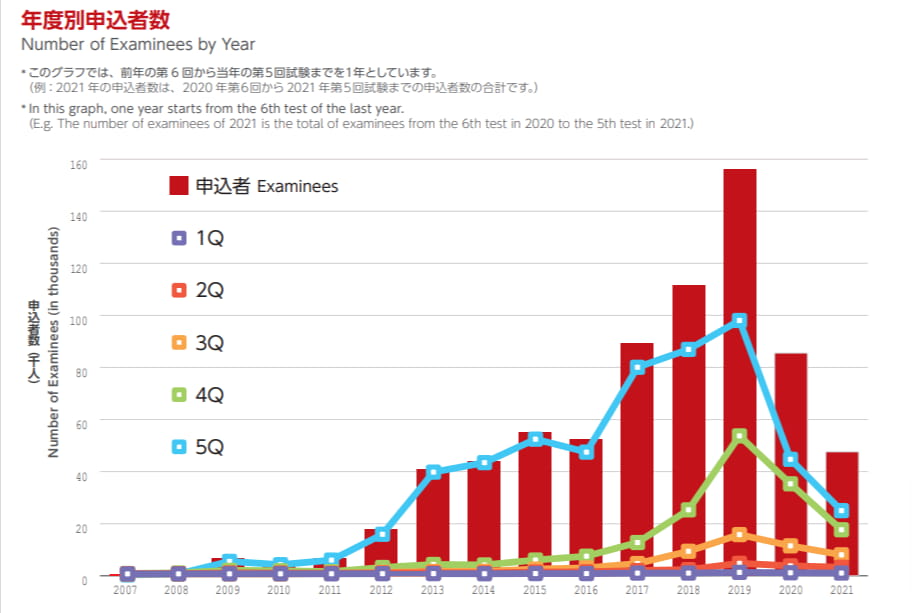
Most employers ask for a valid certificate for jobs requiring Japanese language skills. Thus, a NAT test score can help you get a job.
The format of the NAT test is similar to the Japanese proficiency test. As a result, this is one of the best ways to prepare for JLPT.
Do you wish to know how good you are at Japanese?
This exam can help provide you with this information. Plus, you will be able to identify your flaws. This will enable you to prepare more effectively for the next exam.
All About Nihongo Achievement Test?
All you need to know about the NAT test (Nihongo Achievement Test) is here. Let’s find out!
What are the various levels?
Like JLPT, the NAT test has five independent levels: Q1, Q2, Q3, Q4, and Q5.
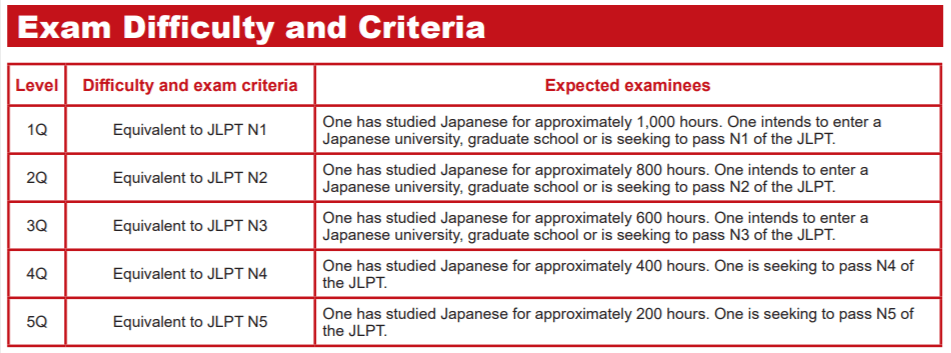
Q5 is the easiest, while Q1 is the hardest.
To some extent, this is like CEFR. For example, 5th grade/Q5 and N5 are somewhat equal to A1. Likewise, Q2/N2 is like B2.
Still, they are not precisely the same. Because CEFRL comprises reading, writing, speaking, and listening. On the other hand, the NAT test measures only listening and reading skills.
This exam has the same name, number of levels, format, and standard as the JLPT. Yet, the Japanese NAT test is slightly more complex than the comparable JLPT levels.
This test provides an excellent opportunity to revise, practice, and prepare for JLPT.
You may not have to take the JLPT test after passing this test. But if you decide to take it, you can easily crack it.
Who can take this test?
There are no specific eligibility criteria for the NAT test.
It is available to anyone irrespective of gender, age, nationality, and the goal of taking the test. Candidates do not need any prior and specific documents for it.
NAT exam structure

The language in levels 1 and 2 includes reading, grammar, and vocabulary. It also has a reading comprehension and listening section.
Levels 3, 4, and 5 contain language sections like kanji and vocabulary. Also, there is a grammar, reading, and listening component.
Every question is a multiple-choice question.
Choose one correct answer from the four options. Then, fill in a solid, dark circle in the designated place on the answer sheets.
The test format and curriculum
| Level | Course content and exam timing |
|---|---|
| Level 1 (Q1) | Language (reading, vocabulary, grammar), Listening comprehension: 60 minutes, Reading comprehension: 110 minutes. |
| Level 2 (Q2) | Language (reading, vocabulary, grammar), Listening comprehension: 50 minutes, Reading comprehension: 105 minutes. |
| Level 3 (Q3) | Language (reading, vocabulary): 30 minutes, Language (grammar), Listening: 40 minutes, Reading: 70 minutes. |
| Level 4 (Q4) | Language (reading, vocabulary): 30 minutes, Language (grammar), Listening: 35 minutes, Reading: 60 minutes. |
| Level 5 (Q5) | Language (reading, vocabulary): 25 minutes, Language (grammar), Listening: 30 minutes, Reading: 50 minutes. |

Test duration
The exam time varies according to the level. The process takes two to three hours, with a ten-minute break between each segment.
How do you pass the Japanese test?
To qualify and pass the test, you must meet these 2 conditions:
- you need to score at least 25% on each section.
- For a “passing” grade, a score of 60% (in most cases) is required.
NAT test centers across the world
A total of 61 testing centers are in 16 countries as of January 2024. All of them are in Asia, mainly in China, Central, Southeast, and South Asia.
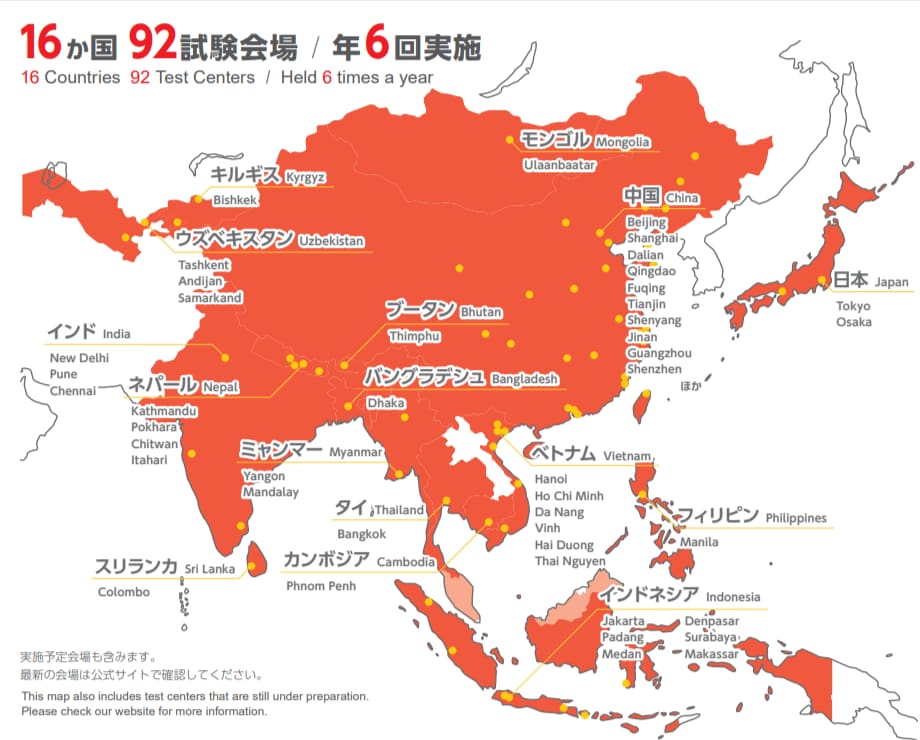
There are 24 in China, 8 in Vietnam, 6 in Indonesia, 4 in Nepal, and 3 in Uzbekistan. There are 2 each in Myanmar, Japan, and Sri Lanka.
Bangladesh, Bhutan, Mongolia, Cambodia, the Philippines, Kyrgyzstan, and Thailand have one exam center.
India has three testing centers: Delhi, Chennai, and Pune.
2024 Examination dates
You can take JLPT only once or twice per year. But they organize the NAT test six times a year, only on Sunday.
They conduct the test after a gap of two months. For example, February, April, June, August, October, and December.
The dates can vary depending on the testing center. To find detailed schedules, refer to the page of each test center.
| Exam Date | Test Deadline | Available Levels |
|---|---|---|
| 1st — February | January | Q1 to Q5 |
| 2nd — April | March | Q2 to Q5 |
| 3rd — June | May | Q1 to Q5 |
| 4th — August | July | Q2 to Q5 |
| 5th — October | September | Q1 to Q5 |
| 6th — December | November | Q2 to Q5 |
What is the cost of the exam?
Each level has a different registration fee, depending on where you intend to take the test.
The registration fee is relatively lower than other European tests like DELE, DELF, TCF, SIELE, Goethe-Zertifikat, and CILS.
The cost is ₹ 2000 in India, for example. In China, it ranges from RMB 460 for 1Q and 2Q to RMB 390 for 3Q, 4Q, and 5Q.
The price is VND 700,000 (Vietnam), IDR 500,000 (Indonesia), NPR 4,500 (Nepal), JPY 5,500 (Japan), MMK 42,000 (Myanmar), LKR 5,500 (SL), UZS 300,000 (Uzbekistan), MNT 50,000 (Mongolia), USD 30 (Cambodia), KGS 2,000 (Kyrgyzstan), TN 2,980 (Bhutan), BDT 3,000 (Bangladesh), USD 55 (Philippines), Band THB 1,560 – 1Q, 2Q and THB 1,060 – 3Q, 4Q, 5Q (Thailand).
How to Apply?
You can apply online before the last date deadline on the website of your test center.
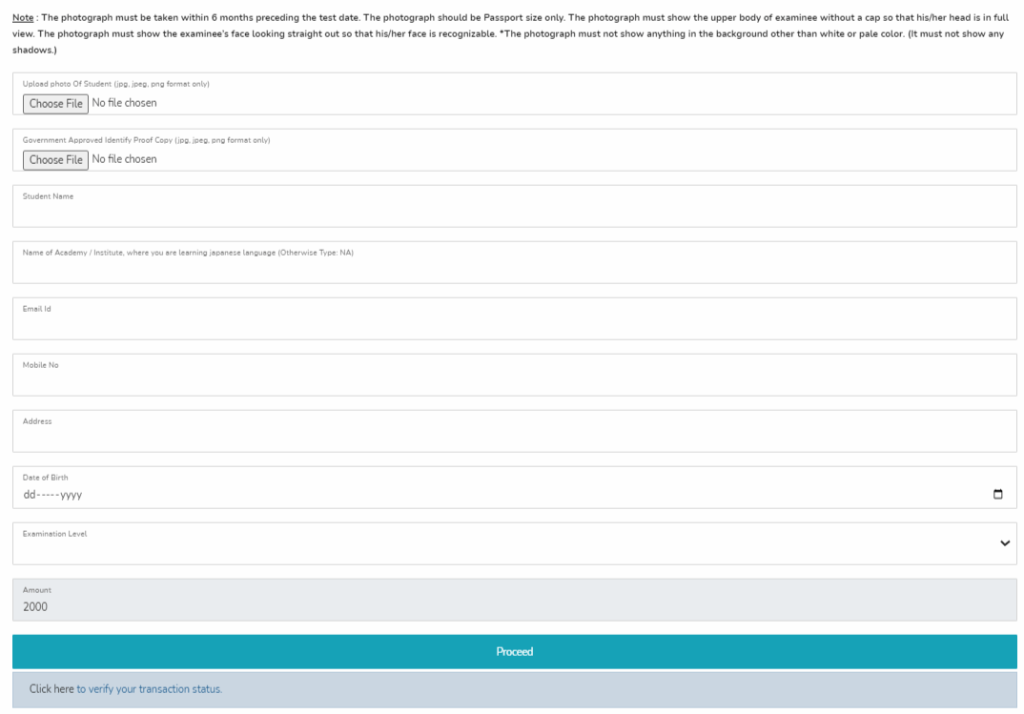
You must upload your latest passport-size photo showing your face with a pale or white background color. Also, add a government identity card.
Once they get the registration amount, the process will be complete. But, once you pay, there won’t be any refund.
After submitting your form, they will mail your ticket 1-2 weeks before exam day. If you don’t receive it, you can contact them.
The ticket includes your name, registration number, gender, date of birth, and photo. At the time of the test, you will need a valid ID card and the receipt from your application.
When do you get the result?
They often release the test results within 3 weeks of the exam.
You get detailed scores, evaluations of each segment, and strengths and weaknesses on your report card. You will also receive a “pass certificate.”
How to prepare?
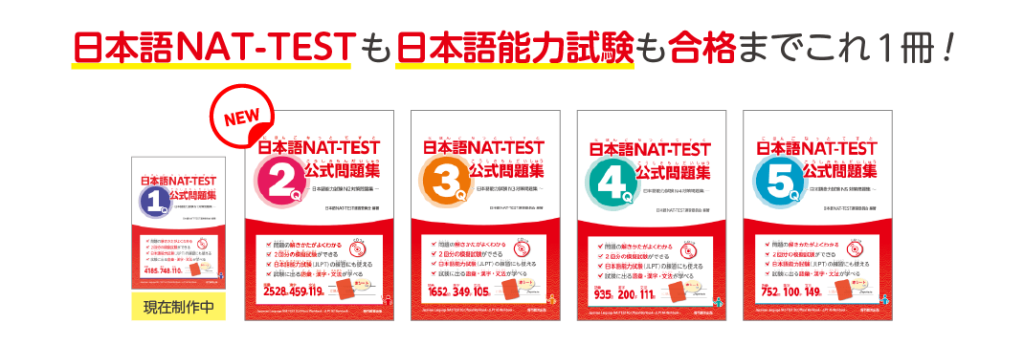
This Japanese Test follows a similar format to the JLPT. Thus, you do not need special preparation if you plan to take the JLPT.
Since Japanese is a complex language, I advise you to enroll in a formal course. For that, you can either find a tutor or a language institute.
You can prepare for the test by studying mock tests, sample papers for JLPT, and previous year’s question papers.
Model papers and sample questions are available on the official website.
They also list many reference books (Let’s Learn Nihongo Series) and workbooks (official questions from the Japanese NAT test). There are available for each level.

You can find it on the NAT website, bookstores, and online shopping sites like Amazon.
Should you take the Japanese NAT exam?
As a Japanese learner, you surely want to check your level and how much you have studied. If you are preparing for JLPT, this is a splendid choice.
To apply for a study or work visa in Japan, you need a minimum score and a globally recognized and authentic certificate of proficiency.
You perhaps want to improve your ability to use Japanese for your career advancement. So you can show likely interviewers how proficient you are.
Whatever your motivation to learn Japanese, the NAT test can be a superb asset to your C.V. for gaining an edge over your competitors.
This is an incredible effort to encourage you to succeed in your personal, professional, and academic lives.
Do you have questions or doubts? Share in the comment section below.







